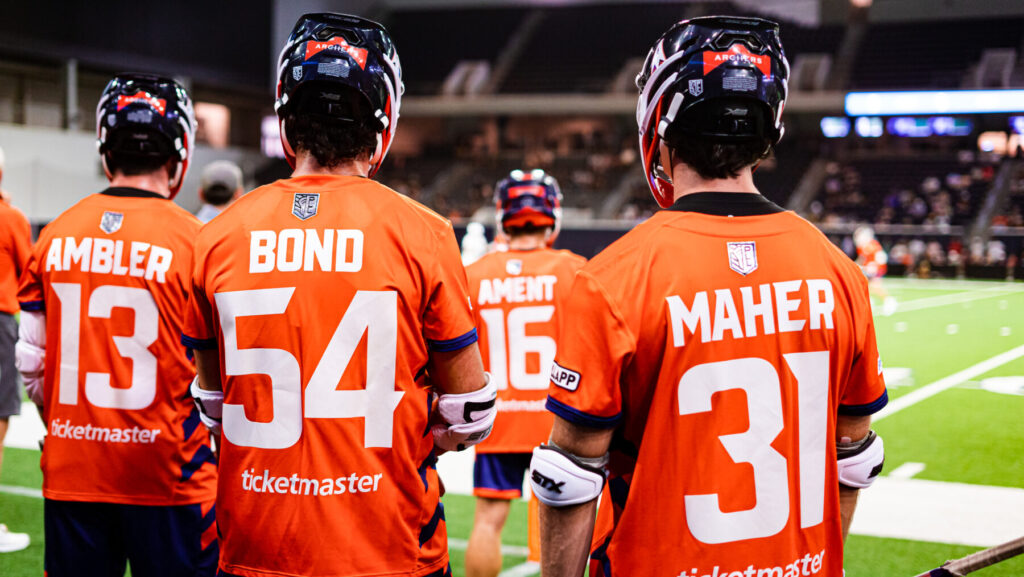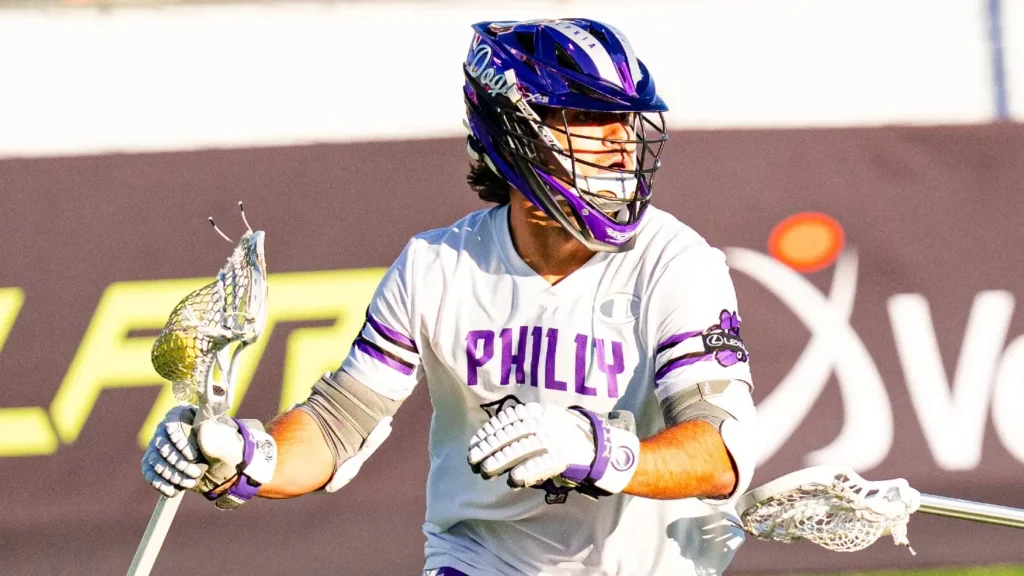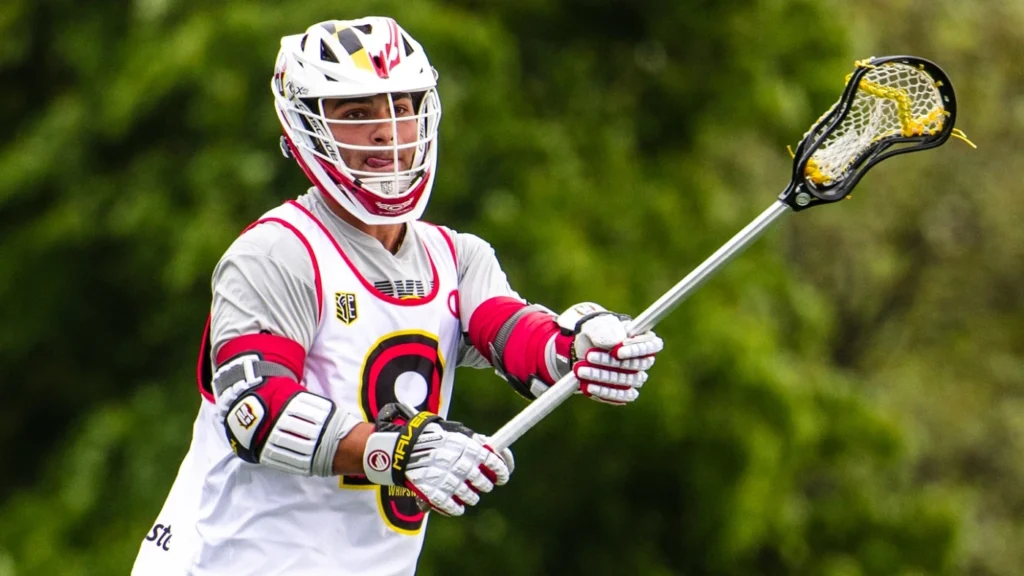
Film study: Why the Archers defense switches every big-little pick
By Zach Carey
Aug 31, 2023
Playoff lacrosse is different. The stakes are higher, the games are even tighter, and the playing styles adapt to be more matchup-based on either end of the field. League-wide shooting percentages off two-man games jumps from 29.9% in regular season games to 35.0% in the playoffs as the best offenses pick at any individual or schematic weak link that a defense has.
The Archers are one of the most switch-heavy defenses in the league, and that will be particularly notable when they faceoff in the semifinals next Sunday. Their willingness to let rookie short sticks Piper Bond and Connor Maher switch onto and defend superstars like Kieran McArdle, Michael Sowers, and others appears unwise at the outset. But there’s a method to the madness.
Why the Archers defense switching picks works analytically
The Archers defense allows only 20.9% shooting off the dodge relative to 28.6% off two-man games. No, they don’t switch every big-little pick. Some are easier to get through than others. But the freedom to switch rather than struggling to maneuver the screen makes playing defense simpler, and the individual defense from the club’s short sticks makes switching worth it.
Bond, Maher, and Latrell Harris have all been solid within their individual matchups, and similarly effective even after switches. As the closest defender on shots, Bond has only allowed 14.7% (5-for-34) shooting while Harris has let up just 20% (5-for-25), and Maher 25% (8-for-32). Among 25 short stick defenders who’ve had 20 or more shots taken as the closest defender, Bond ranks second with the lowest shooting success rate in the league with Harris seventh and Maher 12th.
It’s how these three do against attackmen that makes them stand out. Bond has only allowed one goal when guarding starting attackmen. His 11.1% (1-for-9) shooting allowed is second in the league among short stick defenders who’ve defended five or more shots from attackmen. Maher isn’t far behind at 25% (2-for-8) allowed, good for eighth among short sticks.
Yes, ideally, the best defense means not allowing shots at all. But the quality of offensive play in this league and the depth that each offense has means that merely dictating lower quality shots is a victory, especially for SSDMs.
Bond, Maher, and Harris’ efficacy against attackmen particularly stands out relative to the rest of the Archers’ defense. Only Defender of the Year finalist Graeme Hossack (10.3%, 3-for-29) has a lower shooting percentage allowed against attackmen than Bond on the Archers with Warren Jeffrey (28.6%, 10-for-35) and Matt Mcmahon (26.9%, 7-for-26) in the same ballpark as the shorties. The extrapolation of the intricacies of those statistics implies that leaving Bond, Maher, or Harris in a supposed mismatch isn’t a death sentence for the Archers defense. That’s both a result of their individual defense and how the team schemes its help packages.
Beyond the numbers, it’s the confidence which the Archers defense can have in its shorties that sets the club apart. Two-man games are the hardest action to guard in lacrosse, but switching them simplifies life. Off-ball, helping to a mismatch when Michael Sowers dodges on Piper Bond leaves a five-on-four on the backside. But sliding to a two-man game when Bond stays with his man and Hossack tries and fails to get through the pick leaves a four-on-three, a fundamentally easier advantage to pick apart. That’s why being able to rely on short sticks to switch onto attackmen and not get blown by is so critical.
“Treezy (Harris), Connor, and Piper have been exceptional,” says Archers Head Coach and General Manager Chris Bates. “Really, they’re unsung heroes and a key to our success week in and week out. We can trust our matchups and feel like, defensively, we’re going to lock it down. It’s never been an issue for us. They’ve had that kind of a season. Those guys have been A+ all year long.”
What makes Latrell Harris, Connor Maher, and Piper Bond such good individual defenders
Each of the Archers’ three short sticks have varying strengths that make them such capable defenders, especially against mismatches.
Harris is a bruiser, a next level athlete who will push his opponents off their line. His aggression may come back to bite him at times, but that’s worth it considering how he can single-handedly end offensive possessions. His six caused turnovers tied for the fourth most amongst SSDMs in the regular season.
‘Treezy’ has never feared an individual matchup. Even when he hit Jack Hannah hard enough to break his own stick, he still chased Hannah down when the ball was on the ground and prevented the blossoming star midfielder from dodging at him full speed.
Maher’s strength is his footwork and patience as a defender. He doesn’t overcommit, doesn’t throw useless checks, and he exploits angles to dictate where his opponent dodges. He’s always in the right position, which discourages even players like Kieran McArdle from continuously re-dodging.
Bond’s combination of raw strength, speed, and aggressiveness against a dodge mean that he has the potential (emphasis on potential) to be a Danny Logan level of short stick defender. He’s still a few steps away from Logan’s level of physical dominance against any range of offensive player type, but he’s got the baseline traits to be a shut-down defender.
The play below displays both why the Archers are happier to help to a one-on-one matchup than a two-man game and how they do so effectively. Bond switches onto Michael Sowers after the two-man game from behind so that Jeffrey doesn’t have to play catch up on the league’s quickest attackman. From there, Bond slightly shades topside to force Sowers underneath, and he utilizes his superior strength to force the roll back.
That’s when the defense sends help. Matt McMahon knows it’s unreasonable to leave Bond on an island for too long, so he begins to hedge towards Sowers as an adjacent slide, and he fires when Sowers’ turns his head. McMahon might have been better off leaving Bond alone, but he sacrificed the 14-yard contested step-down from Ethan Walker rather than a better, closer look from Sowers.
That’s defense in the PLL. Determining and forcing the least dangerous shot on a given play is preferable to outright attempting to prevent any shot and giving up a good one. That’s a big part of the philosophy behind the Archers’ tendency to switch big-little picks.
Harris, Bond, and Maher might not be the biggest names on the Archers, and how Tony Resch molds the team's defensive scheme might not be the flashiest narrative. But, if the Archers claim the club's first championship in Philadelphia on September 24th, the short sticks and how they’re used will be a central reason why.






